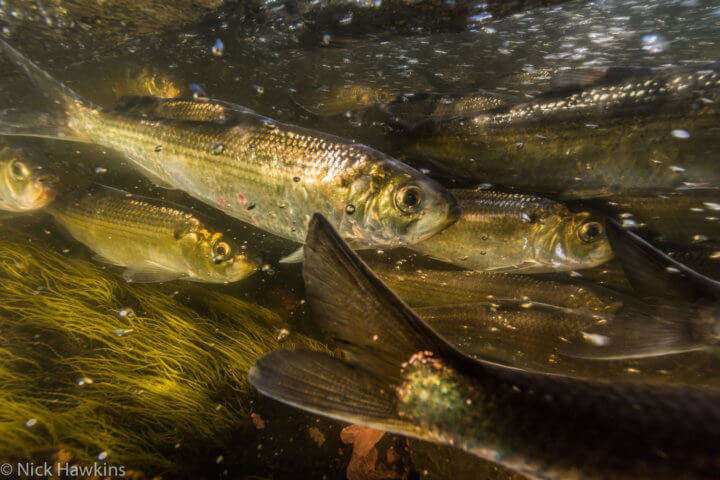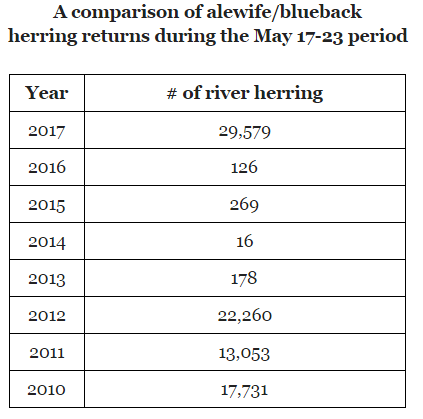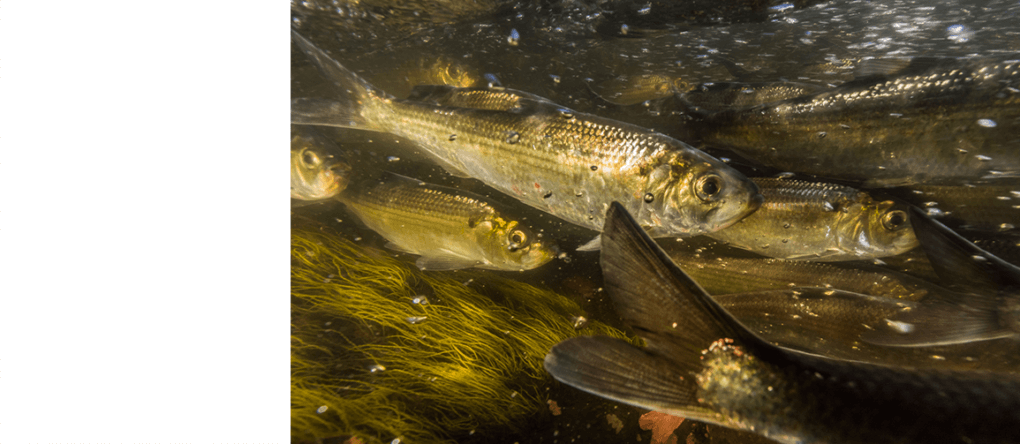
This past week (May 17-23), more than 29,000 gaspereau moved up the Milltown fishway located at the head-of-tide on the St. Croix River between New Brunswick and Maine — marking the highest count for this seven-day period since 1996. Seeing the spawning run off to such a strong start is a real cause for celebration, as much of the river was closed to this important and fascinating native fish until 2013.
Gaspereau are considered a keystone species because of the critical role they play in both freshwater and marine ecosystems, acting as a feedstock for many groundfish, mammals and birds. Historically the St. Croix River saw large runs of gaspereau. In 1851, Moses Perley, an avid sportsman and natural historian, noted that during the 1820s “gaspereau came in such quantities, that it was supposed they never could be destroyed.”
In the 1820s, though, gaspereau moving up the St. Croix were up against dams that were built without fishways. Fishways were added by the 1870s, but pollution had created such a degraded environment that gaspereau numbers still remained low.
 It wasn’t until 1981 that a mix of factors, including improved fish passage and restored spawning habitat, allowed the gaspereau to come back — and come back they did! By 1987, the St. Croix was seeing runs of more than 2.5 million fish.
It wasn’t until 1981 that a mix of factors, including improved fish passage and restored spawning habitat, allowed the gaspereau to come back — and come back they did! By 1987, the St. Croix was seeing runs of more than 2.5 million fish.
Then, in 1995, the State of Maine took action to close the St. Croix River under pressure from smallmouth bass fishing guides who believed that the gaspereau were harming smallmouth bass. Research has since found there is no scientific evidence of this, as gaspereau and smallmouth bass coexist happily in thousands of watersheds around the world. Nonetheless, the closing of the St. Croix dropped gaspereau numbers to a low of 900 in 2002, undermining both the freshwater ecosystem of the St. Croix and the marine ecosystem of Passamaquoddy Bay.
It wasn’t until April 2013 — after 18 years of gaspereau being blocked from more than 95 per cent of their historic spawning habitat — that pressure from the Passamaquoddy Scoodic Riverkeepers, along with other environmental groups (including the Conservation Council), led to both houses of the Maine legislature voting to open the Grand Falls fishway, returning the fish to large swathes of their historic habitat.
We look forward to the results at the end of the spawning season!
You can make a difference — support our Marine Conservation program
Since the establishment of its Marine Conservation Program in 1990, the Conservation Council of New Brunswick has remained the leading authority on healthy ecosystems in the Bay of Fundy and marine environments along the coast of New Brunswick. We do this through a combination of rigorous research, forging meaningful relationships with key groups such as fishers and fisheries associations, government agencies and departments, and coastal communities — and through the dedication of staff to achieve results over time.
Right now, you have a unique opportunity to support this work. We’ve partnered with Small Change Fund and Nick Hawkins Photography to create a virtual tour of the Bay of Fundy. This resource will help us showcase to the world — and government decision-makers — how important the Bay of Fundy ecosystem is to our New Brunswick culture, environment, and economy.
Check out this video for more information on the project, and click here to support the campaign.

